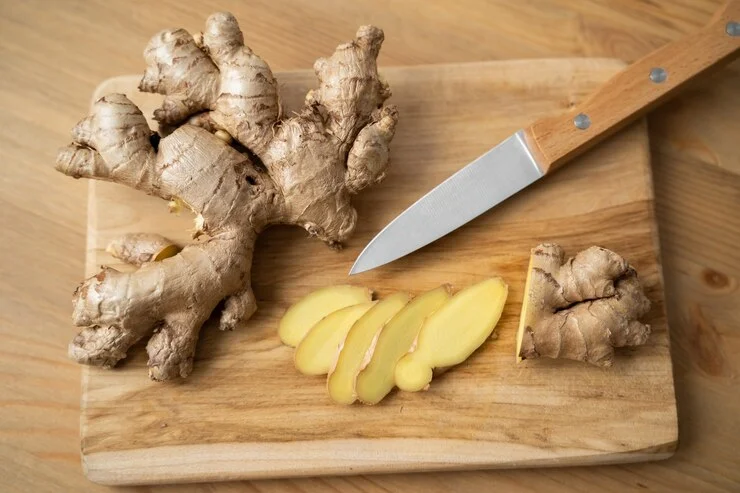Ginger is a versatile and popular ingredient used in many recipes, both for its distinct flavor and its health benefits. Whether you’re cooking a stir-fry, brewing a soothing tea, or spicing up a marinade, you might encounter recipes that call for a specific amount of ginger. But what do you do when a recipe asks for a 2-inch piece of ginger? How do you convert that into tablespoons, especially if you’re using grated ginger? Here, we’ll dive deep into understanding the conversion of ginger from inches to tablespoons, providing clarity and helping you cook with confidence.
Understanding Ginger: Fresh vs. Ground
Before we dive into specific measurements, it’s important to note the distinction between fresh ginger and ground ginger. Fresh ginger is what you’ll find in the produce section—a knobby, fibrous root with a spicy, aromatic flavor. Ground ginger, on the other hand, is a dry powder made from dried ginger root and is much more concentrated in flavor.
For the purposes of this article, we’ll focus on fresh ginger and how to accurately measure it.
Why Measure Ginger?
Ginger has a strong flavor, and getting the right amount can make or break a dish. Too much ginger can overpower other flavors, while too little might leave your dish lacking the spicy kick you’re aiming for. Recipes that call for a 2-inch piece of ginger typically refer to fresh ginger root, which can be tricky to measure precisely in tablespoons or teaspoons.
How to Measure a 2-Inch Piece of Ginger in Tablespoons?
To convert a 2-inch piece of fresh ginger into tablespoons, you’ll need to first understand that ginger is not perfectly uniform in size. However, we can estimate based on average thickness and standard kitchen practices.
Here’s a quick breakdown:
- A 2-inch piece of fresh ginger typically yields around 1 tablespoon of grated ginger.
This can vary slightly depending on the exact size and thickness of the ginger root, but it’s a solid rule of thumb. The best approach is to grate the ginger and then measure it in tablespoons for accuracy.
Steps to Grate and Measure Ginger
- Peel the Ginger – Fresh ginger has a thin, papery skin that is easily removed with the edge of a spoon or a vegetable peeler. Peeling the ginger makes sure you’re measuring the actual ginger flesh.
- Grate the Ginger – Use a fine grater or microplane to grate the ginger. This helps break down the fibrous texture, making it easier to incorporate into your recipe.
- Measure the Grated Ginger – Use a standard tablespoon to measure the grated ginger. A 2-inch piece should give you about 1 tablespoon of finely grated ginger.
If your recipe calls for minced or chopped ginger instead of grated, the measurement might be slightly less, but it should still be around 1 tablespoon.
Why Do Some Recipes Call for Ginger in Inches?
You might wonder why some recipes specify ginger in inches rather than in tablespoons or teaspoons. Here are a few reasons for this:
- Variability of Fresh Ginger – Fresh ginger root can be irregularly shaped, making it hard to standardize measurements in tablespoons. Asking for a 2-inch piece gives a more visual cue for how much ginger to use.
- Ease of Measurement – When you’re in a rush, it’s often easier to eyeball a 2-inch piece of ginger than to peel, grate, and measure it precisely in tablespoons. It’s a time-saving shortcut for experienced cooks.

Converting Ginger Measurements: A Handy Chart
For quick reference, here’s a conversion chart to help you measure ginger accurately:
| Ginger Measurement | Equivalent in Tablespoons |
| 1-inch piece of ginger | ½ tablespoon grated |
| 2-inch piece of ginger | 1 tablespoon grated |
| 3-inch piece of ginger | 1 ½ tablespoon grated |
| 4-inch piece of ginger | 2 tablespoons grated |
Fresh Ginger vs. Ground Ginger Conversion
If a recipe calls for fresh ginger but you only have ground ginger on hand, you’ll need to adjust the measurement. Ground ginger has a much stronger flavor, so it’s best to use it in smaller amounts.
As a rule of thumb:
- 1 tablespoon of fresh grated ginger = ¼ teaspoon of ground ginger.
This substitution works well for most recipes, but be cautious as the flavor profile of fresh ginger is more vibrant and less concentrated than its ground counterpart.
Health Benefits of Ginger
Aside from its culinary uses, ginger is widely known for its health benefits. It has been used in traditional medicine for centuries to treat a variety of ailments, and modern research supports many of these claims. Here are a few reasons why you might want to include more ginger in your diet:
- Anti-Inflammatory Properties – Ginger contains bioactive compounds, such as gingerol, that have anti-inflammatory and antioxidant effects.
- Aids Digestion – Ginger is known to help with digestion, reducing bloating, and soothing the digestive system.
- Relieves Nausea – Ginger is often used as a natural remedy for nausea, particularly in cases of motion sickness and morning sickness during pregnancy.
- Supports Immune Health – The antioxidants in ginger can help strengthen the immune system, making it a great addition to your diet during cold and flu season.
Best Ways to Store Fresh Ginger
When stored correctly, fresh ginger can stay good for several weeks. Here are some tips to keep your ginger fresh for as long as possible:
- In the Refrigerator – Store fresh ginger in the vegetable crisper, wrapped in a paper towel and placed in a resealable plastic bag. This method can keep it fresh for up to three weeks.
- In the Freezer – If you won’t use your ginger within a couple of weeks, consider freezing it. Simply peel the ginger and place it in an airtight container. Frozen ginger can last for several months, and you can grate it directly from the freezer without thawing.
FAQs
1. Can I use pre-minced ginger from a jar instead of fresh ginger?
Yes, but the flavor won’t be as vibrant. Jarred minced ginger can be a convenient substitute, but fresh ginger tends to have a stronger and more aromatic taste.
2. How do I know if ginger has gone bad?
Fresh ginger should have a firm texture and spicy aroma. If the ginger becomes soft, wrinkled, or moldy, it’s time to discard it.
3. Is it necessary to peel ginger before using it?
Although ginger skin is technically edible, it can be tough and fibrous. Peeling is recommended for most recipes, especially if you’re grating or finely chopping it.
4. Can I freeze grated ginger?
Yes! You can freeze grated ginger in small portions (like in an ice cube tray) and use it as needed. Frozen grated ginger retains much of its flavor and is a great time-saver.
Conclusion
Measuring ginger accurately is crucial for balancing flavors in your dishes. A 2-inch piece of fresh ginger typically translates to 1 tablespoon of grated ginger, making it easy to follow recipes and achieve the perfect taste. Understanding how to convert ginger measurements, store it properly, and substitute ground ginger for fresh can elevate your cooking. Ginger is not only a flavorful addition to many dishes but also offers a wide range of health benefits. The next time you have a knobby piece of ginger, you’ll know just how to measure and use it!









